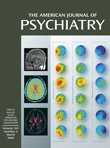Spanning four decades of clinical work involving patients with substance use disorders, my experience has led me to conclude that suffering is at the heart of addictions
(1,
2). Nowhere is this more evident than with individuals who have developed posttraumatic stress disorder (PTSD) and resorted to addictive drugs to medicate the distress and pain associated with PTSD. The contributors to this edited volume have taken up the important challenge of fathoming the relationship between trauma and substance abuse, at the same time making a valuable contribution to understanding the more general issue of how comorbid psychiatric conditions relate to the development of substance use disorders. They provide rich empirical and clinical data to move beyond the simplistic cause-consequence, cart-horse controversies that have surrounded these conditions. They explore the complex human psychological underpinnings of the nature of PTSD and substance use disorders and how they interact. I agree with Dr. Meichenbaum, who in the foreword writes that this book “is a model on how to study comorbid disorders.”
The editors of this book legitimately point out that providers of care for substance use disorders do not regularly screen for PTSD and do not make appropriate treatment referrals. Similarly, trauma experts insufficiently consider the co-occurrence of substance use disorders. Given the extraordinary suffering that occurs in both conditions and is amplified even more when they co-occur, a tragic shortfall too often develops in meeting the needs of patients who suffer with these conditions.
The first chapter on epidemiologic aspects of comorbidity is an indication of the clarity and utility of this book. The authors lucidly and succinctly instruct the reader on important and basic epidemiologic methods and types of studies, examining the relationships between substance use disorders and PTSD (e.g., cross-sectional versus prospective studies). A case in point is how odds ratios are derived and what they mean. It should not surprise the reader that individuals with PTSD are three to four times more likely than individuals without PTSD to have substance use disorders.
Five chapters address assessment and treatment issues. Notwithstanding the considerable controversy over whether PTSD or the substance use disorder should be treated first when they co-occur, the authors seem to agree that simultaneous treatment of both should be the norm whenever possible. Theoretical and procedural approaches to assessment are reviewed. Methods and instruments to evaluate substance use disorders and PTSD are extensively considered, including type and timing of assessment approaches to evaluate comorbidity and establish the temporal order of use of substances and the development of PTSD. The authors of this chapter demonstrate commendable sensitivity to dealing with patients’ problems with affect intolerance and suffering, particular feelings of shame and stigmatization. This sensitivity is also evident in chapters on exposure therapy, “seeking safety” psychotherapy, and the role of coping.
A major portion of my career has been spent on developing an etiological model for substance use disorders based on clinical experience and a psychodynamic perspective. This effort has culminated in the development and articulation of the self-medication hypothesis
(1,
2). The main implication of the self-medication hypothesis is that in the majority of cases suffering leads to substance use disorders and not the other way around—a debate or controversy that is not inconsequential. It is impressive and validating how much the empirical data amassed in this volume complement and affirm the role of self-medication as a major mediating factor between PTSD and substance use disorders. As the editors unequivocally state, “Our position is that the majority of patients follow a pattern in which the development of PTSD is primary” (p. 93). They conclude that “PTSD cannot be considered secondary to substance use disorders and that treatment targeting comorbid SUD [substance use disorder]-PTSD might improve outcome for both disorders” (p. 93).
One of the criticisms of a volume such as this one is the repetition of evidence correlating acquired and inherited psychological, neuroanatomical, and neurophysiological abnormalities associated with PTSD and substance use disorders. What is more often not adequately explained is why many individuals with these same abnormalities do not develop PTSD or substance use disorders. Although at times putting the reader on overload, the exhaustive citings of the literature on epidemiologic, psychosocial, familial, experimental, neuroanatomical, and neurochemical pathways that are likely involved in the development of PTSD and substance use disorders are of benefit to the reader.
Interested students and scholars should find this book exceedingly helpful in directing them to what appears to be one of the most inclusive compilations of studies on PTSD and its relationship to substance use disorders. This includes literature on childhood trauma involving PTSD leading to substance abuse and perpetration of violence as well as studies on comorbidity, PTSD/substance use disorders in Vietnam veterans, incarcerated women, and traumatized adolescents. To the best of my knowledge, Trauma and Substance Abuse is the most comprehensive and up-to-date review of the relationship between PTSD and substance use disorders.

